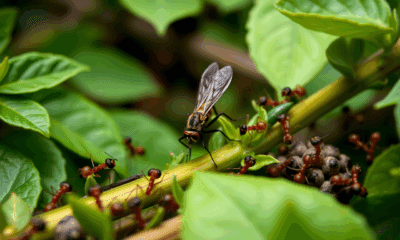While we try to keep things accurate, this content is part of an ongoing experiment and may not always be reliable.
Please double-check important details — we’re not responsible for how the information is used.
Air Pollution
Cooling the City: How Reducing Urban Heat Release Can Help Control Local Rainfall
Stifling heat and sticky air often make summertime in the city uncomfortable. Due to the heat island effect, urban areas are significantly warmer than nearby rural areas, even at night. This, combined with more frequent extreme weather events caused by climate change, often render the city an unpleasant environment in the summer. Urbanization and climate change modify the thermal environment of urban areas, with an expectation that urban disasters from extremely hot weather and heavy rainfall will only become more severe. Mitigating potential damage involves reducing the intensity of the heat island effect and adapting to climate change. Motivated by this problem, a team of researchers set out to investigate how the reduction in urban heat release could help mitigate and control the rapid development of thunderstorms and local rainfall.

Air Pollution
“Breathe Deeply: A 29-Million-Person Study Reveals the Silent Dangers of Air Pollution on Dementia Risk”
Air pollution isn’t just bad for your lungs—it may be eroding your brain. In a sweeping review covering nearly 30 million people, researchers found that common pollutants like PM2.5, nitrogen dioxide, and soot are all linked to a significantly higher risk of dementia. The most dangerous? PM2.5—tiny particles from traffic and industry that can lodge deep in your lungs and reach your brain.
Acid Rain
The Nanoplastics Paradox: Uncovering the Shocking Amounts of Tiny Plastic Particles in Our Oceans
Millions of tons of plastic in the ocean aren’t floating in plain sight—they’re invisible. Scientists have now confirmed that the most abundant form of plastic in the Atlantic is in the form of nanoplastics, smaller than a micrometer. These particles are everywhere: in rain, rivers, and even the air. They may already be infiltrating entire ecosystems, including the human brain, and researchers say prevention—not cleanup—is our only hope.
Air Pollution
Unveiling 12,000 Years of European History: The Mont Blanc Ice Core Record
An ancient glacier high in the French Alps has revealed the oldest known ice in Western Europe—dating back over 12,000 years to the last Ice Age. This frozen archive, meticulously analyzed by scientists, captures a complete chemical and atmospheric record spanning humanity’s transition from hunter-gatherers to modern industry. The core contains stories of erupting volcanoes, changing forests, Saharan dust storms, and even economic impacts across history. It offers a rare glimpse into both natural climate transitions and human influence on the atmosphere, holding vital clues for understanding past and future climate change.
-

 Detectors8 months ago
Detectors8 months agoA New Horizon for Vision: How Gold Nanoparticles May Restore People’s Sight
-

 Earth & Climate9 months ago
Earth & Climate9 months agoRetiring Abroad Can Be Lonely Business
-

 Cancer9 months ago
Cancer9 months agoRevolutionizing Quantum Communication: Direct Connections Between Multiple Processors
-

 Albert Einstein9 months ago
Albert Einstein9 months agoHarnessing Water Waves: A Breakthrough in Controlling Floating Objects
-

 Earth & Climate8 months ago
Earth & Climate8 months agoHousehold Electricity Three Times More Expensive Than Upcoming ‘Eco-Friendly’ Aviation E-Fuels, Study Reveals
-

 Diseases and Conditions9 months ago
Diseases and Conditions9 months agoReducing Falls Among Elderly Women with Polypharmacy through Exercise Intervention
-

 Chemistry8 months ago
Chemistry8 months ago“Unveiling Hidden Patterns: A New Twist on Interference Phenomena”
-

 Agriculture and Food9 months ago
Agriculture and Food9 months ago“A Sustainable Solution: Researchers Create Hybrid Cheese with 25% Pea Protein”





























